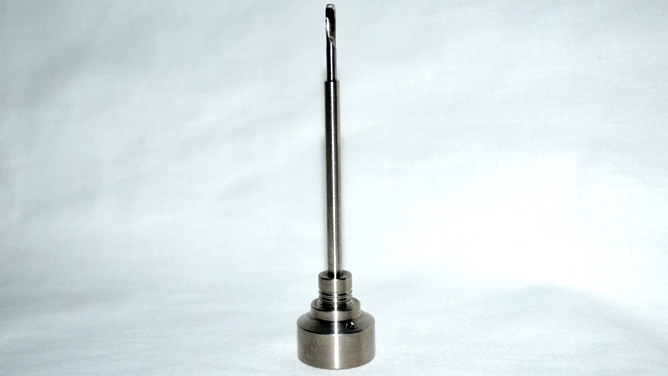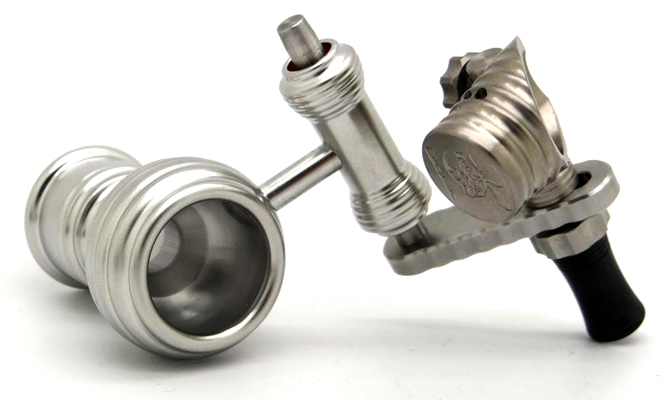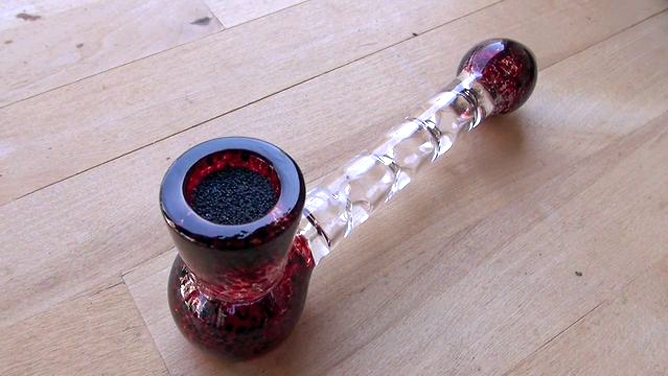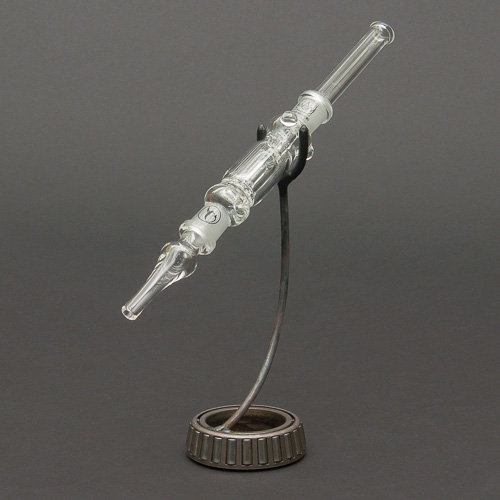
Cannabis Concentrates 101: How To Vaporize Concentrates
In the wake of this past 4/20, one thing is clear: the popularity of dabbing has soared. Those who are fortunate enough to attend events such as the 2014 HIGH TIMES Cannabis Cup in Denver are the first to see the newest products in this fast-growing market.
Variety can be important when consuming concentrates; anyone who dabs a lot will tell you that they have their preferences, and often they are extremely passionate about whichever method they favor.
Little do these dabbers know that the vast collection of vaporizing gadgets is big, and it’s getting bigger each day as technology improves.
Vaporization: What Happens To My Dab?
We’ve covered exactly what cannabis concentrates are and how to handle them, so what do we need to start dabbing? Let’s start with a refresher on vaporization and why it’s essential for medicating with concentrates.
There are three types of vaporization: convection, conduction, and radiation. Conduction is more or less direct contact with a heat source. Convection takes it a step further, creating a consistent and precise flow of heat – you may experience slightly better results when dabbing with this method. Last but not least is radiation, which provides heat through electricity or a direct light source.
Keep these three methods of vaporizing in mind when choosing a nail. Different nails can provide different heating methods, and in combination with certain new tools, you can take advantage of more than one way of vaporization.
The Tools Of The Trade: What Do I Need To Start Dabbing?
When you decide to make the commitment to medicating with concentrates, the sky is the limit to exactly how you can do it. There are quite a few tools that can come very handy when dabbing, and some that are considered to be necessary tools of the trade.
The Dabber
The first utensil needed is a tool to transport your concentrate to the nail – this is referred to as a dabber. Dabbers can be made out of anything from glass to titanium (Ti) to stainless steel. It’s important to remember that it should not melt into the nail when you apply your dab. The dabber also should not affect the taste of your concentrate.
Interestingly, there are specific types of dabbers that work best with different consistencies of concentrates. It’s been said that dabbers with a ballpoint work best with oily, stickier concentrates, while flat heads work best to cut and break into shatter.
If you know which type of concentrate works best for you, you will soon find the best dabber to use it with.

Carb Caps
Companies like Highly Educated Ti are working to perfect the dabber and have invented a groundbreaking accessory to help vaporize your concentrate even better, known as the carb cap. Carb caps basically give your dab a one-two punch during vaporization at a lower temp.
“The carb cap combines both conduction-style and convection-style heating on a domeless nail by covering it with a cap.”
To explain, the carb cap combines both conduction-style and convection-style heating on a domeless nail by covering it with a cap. This allows your concentrate to spread out and be evenly vaporized, while having the added benefit of allowing you to dab at lower temperatures.
Not all nails are capable of using these carb caps, but some companies have made their own to fit their specific product since they emerged. Glass, Ti, or quartz nails often require domes to keep the vapor from escaping, making aking it impossible to use a carb cap.
While it is possible to use your finger to cover the hole of the dome for the same effect, this can be dangerous. I’ve seen people burn their fingertips from bubbling oil. In spite of that, many of those who have used a carb cap (or something similar) say that they never want to dab without one ever again.
Glass Nails
Most people start off with the glass nail that commonly comes with a new concentrate rig, and they can be effective. However, glass nails are prone to heat cracking over time.
Personally, I’ve had my glass nail for a long time, and like to keep it in the rotation – I like the added fact that it’s a natural alternative to Ti.
All in all, glass nails do the trick while in a pinch. However, it can be difficult to achieve a satisfactory dab each and every time.
Titanium Nails
The Titanium (Ti) nail is the average dabber’s go-to method of choice. Most smoke shops will recommend the Ti nail over other nails due to the fact that it takes less time to heat compared to the glass. They are generally more reliable in terms of daily use, but they can often disrupt the flavor of your concentrate.
To best ensure the taste is as accurate as possible, you must season your nail. For an in-depth explanation on how, you can check out the Highly Educated Blog. They recommend seasoning with oil, not any other method (some prefer to use water).
Although these nails are the most user-friendly in terms of quickness, they aren’t the best for patients in comparison to glass, quartz, or ceramic competitors. For instance, your Ti nail will oxidize over time, causing a small layer of titanium oxide. If this layer is especially thick from daily use, it can effect the nail’s productivity.
Of course, your nail will become seasoned over time so some people bypass this step, but the likelihood your dabs will taste like metal for a while is high. These nails come in domeless versions as well.
Quartz Nails
The next type of nail on the list is the Quartz nail. These nails are considered to reign supreme for savoring the terpenes in concentrates, meaning that you can get a really amazing taste.
“Quartz nails can last you a very long time with care.”
Quartz nails are similar to glass in that they take a little longer to heat than the Ti nail. However, they are much more affordable in comparison.
Just like their glass cousin, quartz nails are prone to cracking from extensive use. But quartz nails can last you a very long time with care.
Glassblowers like Joel Halen make unique, quality quartz nails, one being the Honey Hole. The Honey Hole now comes with a similar carb cap-style dabber available online too.
Ceramic Nails
Ceramic nails are the newest product on the market at the moment, and not a lot of people have experience with them yet. What we do know about the ceramic nail is that it’s non porous, so you don’t need to season it. Also, it is said to be chemically inert, making it medical/food grade product.
Many people who have tried the ceramic nails say that the taste you get is great, but it’s nearly impossible not to break or crack from daily use. Hitman Glass says on his Instagram that it’s flat out not durable. Even the most careful users could still potentially see cracks or fractures.
Another downside about ceramic nails for the average dabber is that the heating time takes considerably longer than Ti, glass or quartz. They require patients to heat the nail for approx. 2 minutes before and to let it cool down for about a minute before dabbing.
The upside to this heating process is that ceramic is remarkable for retaining heat, so it’s possible to take more than one dab from heating it once – which could be a benefit to some.
Skillets, Curves, and Honey Buckets
Instead of the more traditional nail, some people prefer the use of a skillet. How that works is you heat a Ti pad attached to a swing arm to the desired temp, swing it under a bell or curve, and apply your dab while you inhale through your rig. This often results in vapor loss, and has been deemed unfavorable by many.
Similar to a curve is a honey bucket, or honey pot. Mothership Glass makes honey buckets for heady pieces like their swanky Faberge egg. Whats appealing about the concept of a honey bucket is that there is no exposed nail like there is with of any type domeless nail, but no ability to lose the dome for a nail that not only requires one, but is attached to it.
With the swing arm attachment, you eliminate a lot more risk of burning yourself or something else since the nail is protected by the rest of dome. Another company by the name of Cosmic Glass also makes quality Honey Hives which come in variety of options, like Ti and quartz.
The Health Stone
If you thought that these were the only tools available to dab with, you thought wrong. Newer inventions, like the Health Stone have hit the market in recent years and people are starting to take notice.
What makes the Health Stone stand out is that it’s the quickest way apart from vapor pens to dab. All you need is a triple flame torch and some oil – no need to wait for a nail to be heated, and no domes are required.
“The technology behind the Health Stone relies on gravity and a bit of skill.”
The technology behind the Health Stone relies on gravity and a bit of skill. It is made from a vapor stone with many tiny holes and gaps that allows the concentrate to sink into the stone and eventually vaporize.

First, you load your dab on the coin-sized, couple-centimeters-thick stone, keep your torch far away and melt your concentrate slightly into the stone. Then bring the flame closer, all while providing a strong consistent dragto vaporize the concentrate. Depending on the piece you’re hitting, it could be difficult to have enough air to pull the vapor into your lungs.
It takes time to learn to hit a health stone correctly, and depending on the type your hitting (aka whether or not you’re dry hitting it) it could feel really harsh. This fact alone deters many people away from a health stone.
But if it’s not this issue, it’s the fact that you do inhale a percentage of the gas emitted from your torch. That being said, there are differing opinions on whether or not this should cause concern.
The Nectar Collector
Last, but certainly not least in the clearly wide array of options is the Nectar Collector. Now, this option does require the torch but provides a better portability factor than normal rigs do. The nectar collector is a vapor straw with the added benefit of water filtration.
“Nectar collectors come with different types of tips, and are made from borosillicate glass.”
The glassblowers at Wasatch glassworks and Kristian Merwin hand makes these vapor straws in Colorado, and recently released a newer 3.0 version.
Nectar collectors come with different types of tips, and are made from borosillicate glass. To use one you need a torch and a glass pad (preferably with a lip) to place your dab on.

What is alluring about this is the water filtration provided (which the handvapes that I’m familiar with don’t have). Although this doesn’t appear to necessarily make dabbing on the go any faster, it certainly looks like a way to vaporize on the go more efficient.
As you can see, the sky is the limit, and the technology is developing everyday. Consumers have the ability to tailor their concentrate experience to their liking in so many different ways, it’s dizzying. Most people stick with the standard choices right now, but the cannabis industry has been known to embrace new approaches and inventions as the science progresses.
Dabbing is by no means a new trend, and many patients are reaping the benefits of cannabis concentrates. With the sea of options to chose from, any person who wants to use concentrates can find the best method that works best for them.